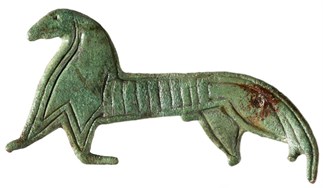The project, which is supported by The Velux Foundations, is led by the research centre manager, Mads Runge, and is carried out in collaboration with the Museums of Eastern Funen, the Historical Museum of Northern Jutland, Moesgaard Museum, the University of Southern Denmark, Aarhus University and Copenhagen University. Associated with the project is an academic reference group with specialists from the universities of Lund, Oslo, Bergen, Copenhagen and Aarhus, including Center for Urban Network Evolutions. The project is to be completed in the period 2017-2021.

Using Odense and Aalborg as case studies, the project will provide a new proposal for how the earliest urbanisation process in southern Scandinavia occurred. The aim is to study the development of human societies starting with the central areas (spaces) of the Iron Age, which are defined as concentrations of localities characterized by prosperity as well as functions such as trade, crafts, cult and defence, through to medieval cities (places), where the power structures are gathered into one place. The chronological framework is approximately AD 400-1100, and the study covers the areas around Odense Fjord as well as the central and eastern part of Limfjord. There are a number of common features involved with the establishment of both Odense and Aalborg but there are also several differences, which makes them suitable research subjects for analysing early urban formation in southern Scandinavia.
The studies combine landscape analysis and a context-based approach with detailed analyses of artefact materials, and construction and settlement structures. The data is sourced from archaeology, place names, topography, geology and selected historical sources as well as a number of scientific analyses. The theoretical side draws its inspiration from the social sciences as well as geography and economics. The research side is closely linked to innovative dissemination and learning with focus on a 1 on 1 presentation of archaeological landscapes and sites on location, with art as a catalyst.
